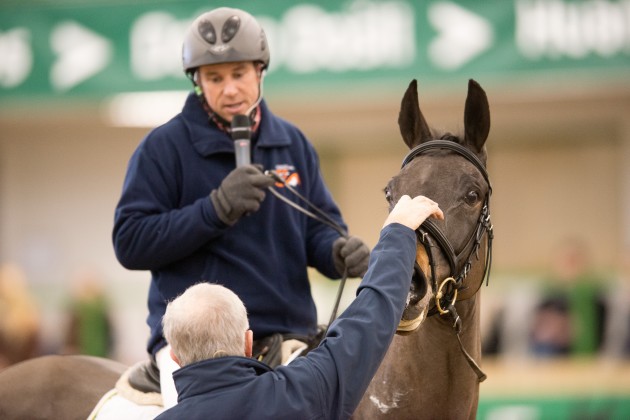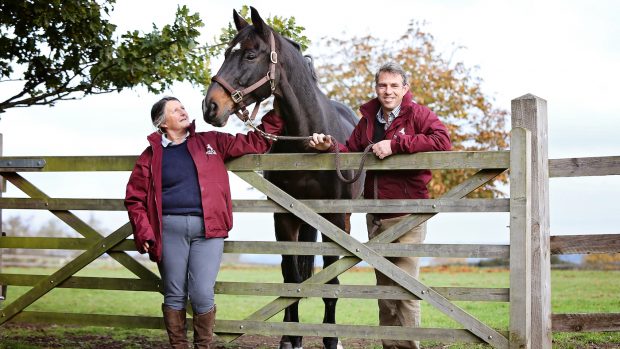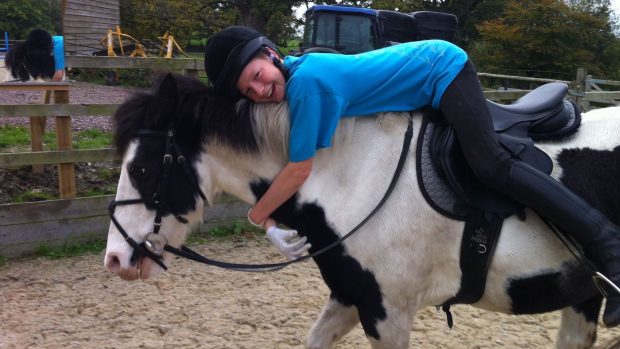How many times have you collected your test sheet and felt robbed of several marks? Do you truly understand what the dressage judge is looking for?
During a demonstration with Sam Griffiths and his CCI2* mount On The Brash at the International Eventing Forum, which took place at Hartpury College on Monday, 2 February, FEI dressage and eventing judge Christoph Hess revealed five things you must do in the warm up to set your horse up for high marks — whether you ride at grassroots level or the very top.
1. Make the horse use its neck as much as possible
Christoph refers to the throatlatch — where the head and neck connect — a lot. He says the neck must be open in order for the horse to be working correctly, and not dropping behind the vertical.
“It’s important the horse is using his neck as much as possible because it balances the whole body and lets the hindleg come under his centre of gravity,” says Christoph. “A lot of riders ride their horses short in the neck, but that goes against the nature of a horse. When they canter across a field they use their neck to balance.”
2. The horse’s back is a bridge between his front and back, and it should be swinging
How you warm up will help with this.
“Always start in rising trot so that your weight is off the horse’s back,” says Christoph, who says that On The Brash needs to learn to swing more.
“He needs more impulsion, but his back is still quite weak so Sam is doing the right thing [by working the horse on a longer contact so that he is stretching down].”

3. Consider how you are sitting
Christoph asks Sam to canter in a two-point seat, rather than a true dressage seat.
“The two-point canter position is like rising trot. The more you do it the more possibility the horse has to use its back and stretch more.”
4. Settle into a rhythm and monitor the tempo
“Sometimes when riders collect a horse’s stride the three-beat rhythm isn’t clear,” explains Christoph. “The tempo is also important. A lot of riders are fast on the long sides and slow on the short sides, but it should be consistent.”
5. Transitions — think “go” rather than “whoa”
“The idea isn’t to finish the canter but start the trot,” says Christoph. “That way it’s something you do with driving aids, not the reins, and it is a forward movement with the horse stepping forward into it.”
Christoph Hess is Head of Instruction for Germany’s DOKR, and was awarded the title Professional Riding Instructor by the German National Federation. He is also an examiner of judges and trainers at the highest levels of both dressage and eventing.
- Next year’s International Eventing Forum will take place at Hartpury College on 1 February 2016




